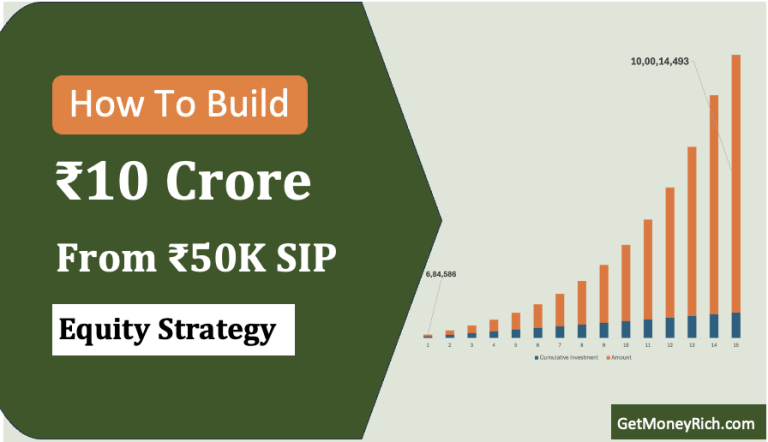Ever noticed how some company names keep popping up again and again when you think about certain products or services? Whether it’s your daily fuel, the phone you use, or even the medicines you take, you often see the same few brands dominating the market. Have you ever wondered why? What makes these companies so powerful? Well, that’s what we are going to talk about today.
This phenomenon is called “market share,” and it essentially represents a company’s slice of the pie in its particular industry.
Think of it like this: if all the money spent on, let’s say, petrol in India is the whole pizza, market share is how big a slice each company gets. A bigger slice means more influence, more customers, and often, more power in the market.
In fact, it’s common to see that a large chunk of many industries are dominated by just a few players.
In this post, we’ll decode the concept of market share.
We’ll explore how a few large companies often dominate various industries in India. So what this means for us as stock investors? W’ll discuss that as well.
I’ll be using real industry data to help illustrate these concepts and talk about how you should approach these kinds of markets.
Table of Contents
1. Top Companies in An Industry & Their Market Share
1. What is Market Share and How it is Measured?
Alright, let’s dive a bit deeper into what market share actually means.
Simply put, market share is the percentage of total sales or revenue in a specific industry that a particular company captures.
It’s like a competition, but instead of a race, companies are battling for the largest share of the customers’ wallets in their specific industry.
Imagine, for example, the “Oil & Gas – Diversified” sector, which we saw in our data (see above). This sector includes a lot of companies dealing with oil and gas production, refining, and distribution. Now, if all the money spent on these services in India is worth, say, Rs.1000, and one company, like Indian Oil Corporation (IOC), makes Rs.467.50, then their market share would be 46.75% (=467.50/1000 * 100).
This means that almost half of the money spent in this sector goes to IOC. Similarly, Bharat Petroleum (BPCL) has a market share of 26.98% and Hindustan Petroleum (HINDPETRO) has 26.11%.
So, how exactly do we calculate market share? It’s pretty straightforward:
Market Share (%) = (Company’s Revenue / Total Industry Revenue) x 100
In other words, you take how much money a company earns in a specific period, divide it by the total money earned by the entire industry during that same period, and then multiply by 100 to get the percentage.
Now, why is this metric so important for investors like us?
Well, market share is like a report card for a company’s competitiveness. A high market share often indicates a company that’s a market leader. Such companies have a strong brand recognition, efficient operations, or some kind of competitive advantage.
The point is, what makes them the industry leader? It could be that they offer a better product, have lower production costs, have a better distribution network, or have created a very strong brand image over the years.
When companies have a high market share, it’s generally much harder for other smaller companies to compete with them.
Let’s take the “Life Insurance” industry as another example from our data.
We saw that Life Insurance Corporation (LIC) has a staggering 69.36% market share. This clearly shows the immense scale and dominance that LIC has in its industry. It means that most people in India prefer to go to LIC when they buy a life insurance policy.
Similarly, in the “Software & Services – Diversified” industry, Tata Consultancy Services (TCS) dominates the market by owning a 38.05% share.
What Inference We Can Draw?
Market share gives us a glimpse into the health and strength of a company within its specific sector. It shows us which companies have the biggest power in the industry.
However, it doesn’t always mean that companies with a large market share are always the best investments.
Sometimes companies that are growing fast, or smaller players in the industry can generate high returns over the long term. It’s just one of many important parameters that we need to look at before we decide to invest in a company.
When we are evaluating different investment options, we must also look at the market share because it will tell you who the dominant players of a industry.
Now that we understand how to interpret market share, let’s move on to understanding why these few giants manage to grab most of the market share in the Indian market.
3. Why Does This Happen? (Market Concentration)
So, now that we’ve seen how a few companies tend to dominate various industries, it’s natural to ask: Why does this happen? Why aren’t markets more evenly distributed among all the players?
The truth is, several factors contribute to the high levels of market concentration we often observe.
Let’s explore some of the key reasons using our Indian market data as examples:
- Economies of Scale: This is a big one. Companies like Indian Oil Corporation (IOC), with its massive 46.75% market share in the Oil & Gas sector, often benefit from economies of scale. This means that the more they produce, the lower their per-unit costs become. They can buy raw materials in bulk, optimize their production processes, and distribute their products more efficiently. This cost advantage allows them to offer competitive prices, further cementing their dominance and making it very difficult for smaller players to compete. Think about the “Cement” sector, where Grasim (55.03% market share) benefits a lot from economies of scale.
- Brand Recognition and Trust: When you think of life insurance, the name that often comes to mind is Life Insurance Corporation (LIC), with its massive 69.36% market share. This is a evidence to the power of brand recognition. Years of consistent service, marketing campaigns, and sheer presence in the market leads to trust and customer loyalty. Consumers often choose brands they recognize and trust, giving market leaders like LIC a huge advantage. Smaller insurance companies struggle to gain the same level of trust due to their relatively unknown brand image.
- Network Effects: Some industries naturally lend themselves to network effects, where the value of a product or service increases as more people use it. The “Telecom Services” sector is a great example. Companies like Bharti Airtel (65.81% market share) benefit from network effects where the more people that use their mobile network, the more valuable their services become. This makes it harder for newer companies to establish themselves, as potential customers are often inclined to choose the network with the largest user base, thereby strengthening the leader’s dominance.
- Regulatory Hurdles and Barriers to Entry: In certain sectors, there may be significant regulatory hurdles, requiring large investments and long approval processes. For example, the “Oil & Gas” sector, which we looked at earlier, has a very large regulatory hurdle that makes it difficult for smaller companies to compete with established giants like IOC. These barriers can make it very difficult for new players to enter the market, further consolidating the power of existing players. Even in sectors like the “Banking” sector, where government regulation favors existing banks, it creates a barrier for other players.
- Technological Superiority: In the “Software & Services – Diversified” sector, companies like Tata Consultancy Services (TCS) gain a competitive edge because they are at the forefront of technological innovations. This helps them offer superior services, attract and retain top talent, and develop a better brand than other companies. This can sometimes result in technology becoming a barrier for smaller companies.
- First-Mover Advantage: Sometimes, the first companies to establish themselves in a market gain a significant advantage. They secure strategic locations, establish large distribution channels, and form partnerships that become hard for new entrants to match. In many sectors, we see a pattern that first movers usually become the largest players in the market.
In short, the combination of the above factors often results in a few large companies dominating their respective industries. It’s not necessarily a sign of unfair practices, but rather a consequence of how markets naturally tend to concentrate due to these factors.
Now, let’s explore what all of this means for us as stock investors.
4. What Does This Mean for Investors Like Me and You?
Okay, so we’ve seen how a few giants dominate many Indian industries and why it happens.
Now, the big question is: What does all of this mean for investors like me and you?
Should you only be investing in these market leaders, or should you look elsewhere? The answer, as with most things in the world of stock investing, is nuanced.
4.1 Investing in Market Leaders: The Pros
- Stability and Established Track Record: Companies with high market share like Life Insurance Corporation (LIC) in the insurance sector (69.36% market share), or Indian Oil Corporation (IOC) in the oil and gas sector (46.75% market share) tend to be more stable and have a long-established track record. They often have predictable revenue streams and can withstand market fluctuations better than smaller players. This can make them attractive to risk-averse investors looking for a reliable investment.
- Lower Risk (Potentially): Because market leaders often have solid fundamentals, they may be seen as less risky compared to smaller, more volatile companies. This doesn’t mean they are risk-free, but they may offer a safer harbor during market turbulence. A company like HDFC in the asset management space (35.97% market share) is a great example of a relatively safe bet for a beginner investor.
- Potential for Dividends: Mature market leaders, often generate substantial profits and have the ability to distribute regular dividends, which is always a good source of income for an investor. For example, companies like Tata Consultancy Services (TCS) in the software sector (38.05% market share) are also known for providing steady dividend payouts to their investors.
4.2 Investing in Market Leaders: The Cons
- Slower Growth Potential: Large, established companies like IOC, may have already reached their peak growth phase. They may not be able to grow as fast as smaller, emerging companies. If you are looking for high-growth potential, these established market leaders may not be the best fit for you.
- Potential for Complacency: Sometimes, market leaders become complacent, and lose their competitive edge as they are used to being at the top of the food chain. They might fail to innovate or adapt to changing consumer needs, making them vulnerable to disruptive new players.
- Valuation Concerns: Because of their brand recognition and stability, market leaders often command higher valuations. This could mean that you end up paying a premium price for the stock, which may limit your returns. For example, a stock like Asian Paints (59.12% market share) may be overvalued compared to other players in the market, because of its huge brand value.
4.3 Exploring Alternatives: Smaller Companies and New Sectors
- High-Growth Potential: While smaller companies may be riskier, they often have a higher growth potential. Companies that are relatively new may have more potential to expand faster than very large companies like IOC. If you are willing to accept more risk, these companies can generate exponential returns in the long term.
- Diversification Benefits: Investing in smaller players or companies in niche sectors can provide diversification benefits and reduce our overall portfolio risk. The key here is to do your homework, choose the companies that have a strong business model and a bright future.
- Look for Turnaround Stories: Sometimes, companies that are undergoing a turnaround strategy can generate very high returns if the turnaround strategy is successful. You must have a good understanding of business dynamics before you invest in these kinds of companies.
My Personal Take
I believe that a well-diversified portfolio should have a mix of both established market leaders and promising smaller players.
While market leaders offer stability and some predictable returns, a portfolio without small cap stocks would not fully capture the market upside.
I am generally wary of putting most of my eggs in the basket of market leaders, due to their limited growth potential. However, a small allocation to some large-cap stocks is always a good option in a risk-adjusted portfolio.
I also tend to look at smaller companies that have some unique competitive advantages or that are working in high-growth sectors.
I think, we should not just blindly invest in large, dominant companies. Instead, we should try to understand why they have such a big market share, and what is their growth potential.
Conclusion
We’ve explored how a few large companies often dominate various Indian industries, and discussed what this all means for your investment strategy.
We saw how factors like economies of scale, brand recognition, and regulatory hurdles can contribute to this concentration of power.
While market leaders offer stability and potentially lower risk, their growth potential may be limited. On the other hand, smaller companies often present higher growth prospects but come with greater risks.
Understanding market share is critical for making informed investment choices.
Avoid simply following the crowd and invest blindly in market leaders. We must try to analyze the reasons for their dominance, and whether they have the potential to maintain that position in the future.
A balanced investment strategy should include both established giants and promising smaller players.
If you found this article useful, please share it with fellow investors or leave your thoughts in the comments below!
Have a happy investing.






